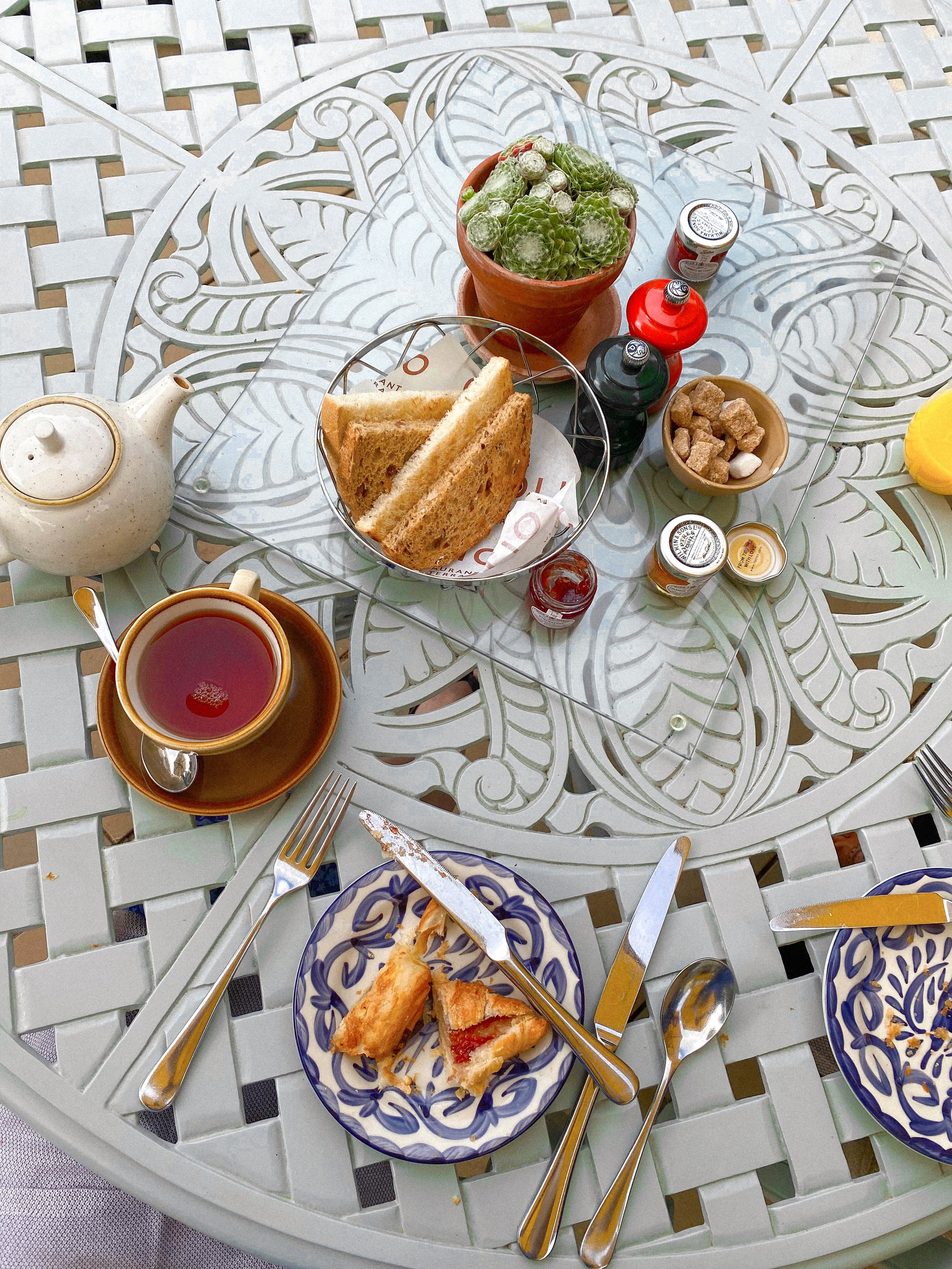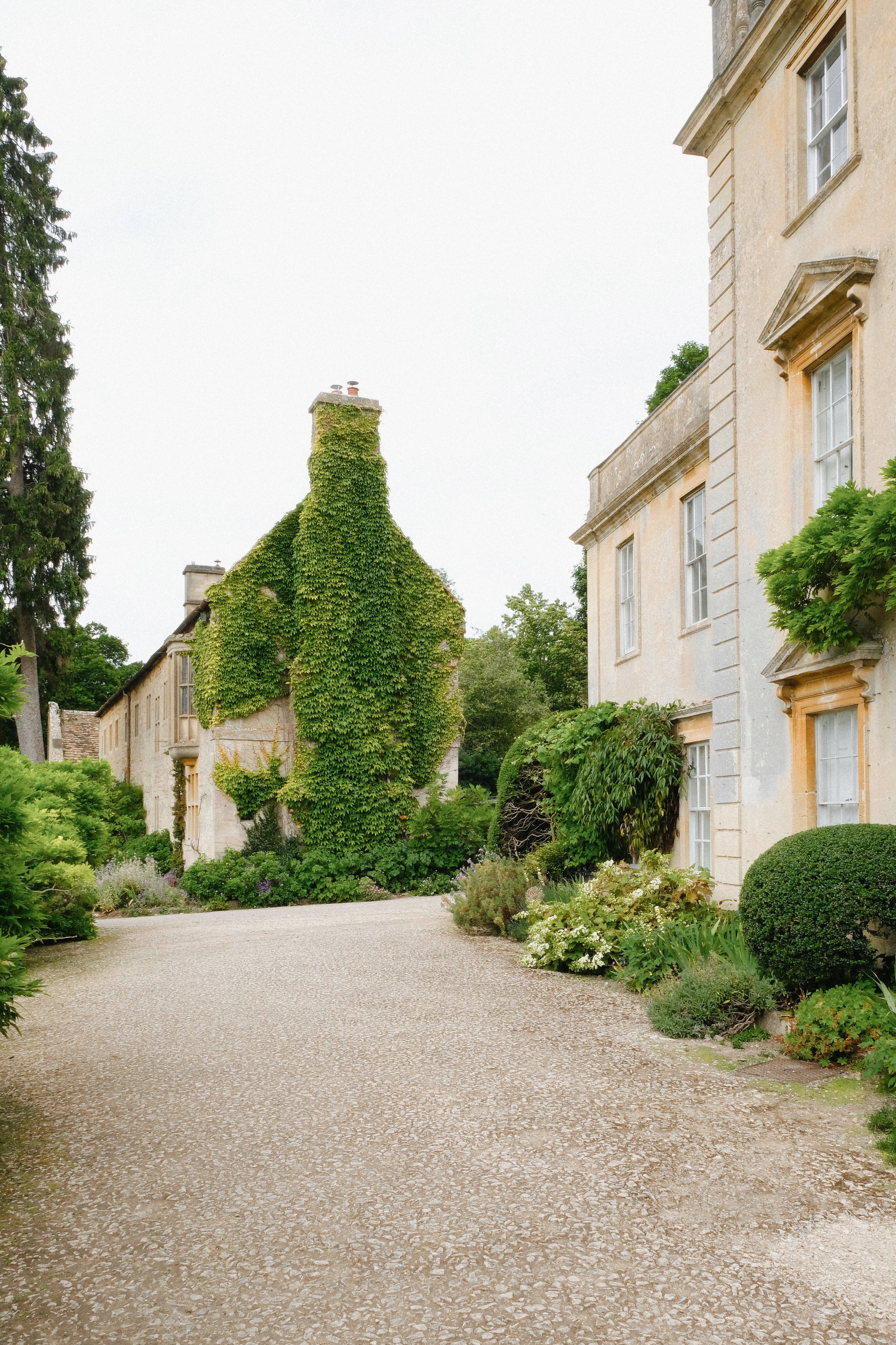Midsummer in Somerset: Part II
After a delicious breakfast of eggs royale at our hotel, followed by one final relax in the spa, we checked out and headed for another wonderful day out. Our first stop was Iford Manor.
As we arrived, we were greeted with the most chocolate box scene. A stone bridge with Britannia standing guard guides the eye towards the beautiful, honey-coloured limestone manor. Red valerians draped the banks of the River Frome, which was gently flowing, and busy bees filled the air with a friendly buzz.
Iford Manor is an enchanting place. We quickly ran out of superlatives to describe these magical gardens. The Iford Valley where the estate is situated has been occupied since Roman times. The property and its gardens are Grade I listed and were largely created by the renowned Edwardian garden architect, Harold Peto, who lived there from 1899 until 1933. Peto’s skill for garden design, planting and architecture meant that he was in demand, especially in the South of France, in fact, Cap Ferrat was nicknamed ‘Peto Point’ in Edwardian times. Working for royalty, aristocracy and tycoons, his main patrons were the then Countess of Warwick and Isabella Stewart-Gardner (whose Boston gallery we will visit in September). Peto made his mark on Iford’s landscape, developing the terraced garden on the hillside behind the house into a romantic oasis with follies, sculptures, monuments, landscaping and even a cloister. It has a very Italianate touch, harking back to the estate’s ancient history, with a touch of the Orient in the form of a secluded Japanese garden. In his posthumously published manuscript, The Boke of Iford, Harold Peto wrote:
Old buildings or fragments of masonry carry one’s mind back to the past in a way that flowers cannot do. Gardens that are too stony are equally unsatisfactory; it is the combination of the two in just proportion which is the most satisfying.
Peto succeeded in implementing his words, combining sensitive planting with architecture from his travels.
In mid-summer, the gardens are alive with luscious flora and fauna. Nature interweaves with antiquities and the delicate scent of seasonal flowers carries on the warm summer air. Rambling roses hang heavily from every column, clematis climb wrought iron rails, Martagon lilies and snapdragons fill the borders and stone staircases, which transport you to other worlds, are garlanded in delicate violet campanula and wispy daisy fleabane.
A particularly striking part of the garden is the structure designed in the style of a thirteenth-century Romanesque cloister with stone arches, columns, statues and marbles Above the entrance an inscription from Alfred Lord Tennyson’s poem, The Palace of Art reads: ‘Haunt of Ancient Peace’ and you do feel as if you have been transported to a place of tranquil antiquity.
It's a place that inspires and uplifts, and to extend that feeling you must visit their charming café. Their on-site bakery serves freshly made cakes, pastries and savoury snacks. We shared slices of their courgette and dark chocolate cake and spiced tea cake, washed down with loose-leaf tea and lemonade. In the estate’s adjacent restaurant, a live band filled the air with jazz. Well-behaved dogs sat looking wistfully up at their parents, hoping a crumb or two would find its way into their mouth. We could have sat there for hours listening to the music and general hum of visitors’ chatter.
We then headed to Westwood Manor, a fifteenth-century stone manor house in the care of the National Trust. Westwood Manor may be small, but its history – which spans three centuries – is palpable in the beautifully restored rooms. Westwood was originally the property of the Priory of St Swithin at Winchester and was rented by a number of tenant farmers. The core of the present house is the work of Thomas Culverhouse, who extended an earlier building in 1480. The lease was then acquired by a prosperous local clothier, Thomas Horton in 1518 who made his own alterations. These were followed by the removal of many of the home’s medieval aspects when John Farewell lived in the property between 1616 and 1642. Farewell also commissioned some fine plaster decoration including an overmantel which depicts, among other things, two geese hanging a fox and a double-tailed mermaid. You can see many more unusual motifs on the tour. In 1911 Edgar Lister bought Westwood Manor and meticulously restored it to its seventeenth-century iteration. Medieval, Tudor and Jacobean influences can be found throughout the property. The King’s Room is particularly striking. The walls are lined with twenty paintings of England’s monarchs, believed to have come from portrait panels hung at another Tudor property: Keevil Manor. England’s earliest Italian keyboard – a virginal dating from 1537 – also forms part of the collection. Unlike more grandiose manor houses, the rooms at Westwood feel homely and domestic.
In the gardens you are charmed by curious topiary, luscious lawns and small ponds where waterlilies bloom. There is also a fantastically clipped yew shaped like a house with a chimney and windows.
Our day concluded at Dyrham Park, a spectacular National Trust property that we have visited many times before when Julie lived in Bristol. Its impressive history and magnificent landscape make it well worth a return visit.
You park at the top of a grand hill that gives nothing away to what lies in the valley below. As you walk down the sweeping driveway, often able to see the parkland’s fallow deer, you are met with the majestic sight of a honey-coloured Baroque home. There has been a history of occupation at Dyrham Park since the Bronze Age, but the house and estate you see today is centred on the work of William Blathwayt in the late-seventeenth-century. In 1689 Blathwayt inherited a rundown Tudor building. Fifteen years later this had been transformed into a Baroque house showcasing his ambition and success. In the eighteenth-century, Blathwayt’s guests were greeted by birdsong. While visitors today are not treated to the same authentic soundscape, you get a flavour of the property’s grandeur in the entrance hall as a large bird cage hangs in the centre. As you continue your tour of the house you continue to learn of Blathwayt’s international connections and inspirations. He filled his house with beautiful art, objects, textiles and furniture. The repetition of blue and white ceramics throughout the house reveal the influence of his time spent in the Netherlands. Blathwayt loved Delftware. Today, around a third of his extensive Delft ceramics collection survives at Dyrham. Another highlight of the collection is A View Through a House by Dutch painter Samuel van Hoogstraten. He conjures up a three-dimensional space, and it is as if you are looking straight down a long corridor. There’s an array of curious objects to ponder within this delightful trompe-l’oeil, including a love letter on the stairs, a caged bird set free and a sweet dog. The gardens are equally as special as the house. An elegantly manicured parterre feeds into an oasis of wilder style planting where a meandering path guides you around a large pond. The estate is a dazzling time-capsule into the final years of the Stuart era.
We then returned to the station for Julie to board her train home. The journey took us through more picturesque places, including Bathampton, where we crossed one of the oldest toll bridges in England, and Bradford-on-Avon, where we made a mental note to return next time we were in the area. We filled our short weekend by visiting so many brilliant places and hope to return to this part of the country soon.
If you missed Part I of this blogpost, find it here.


































